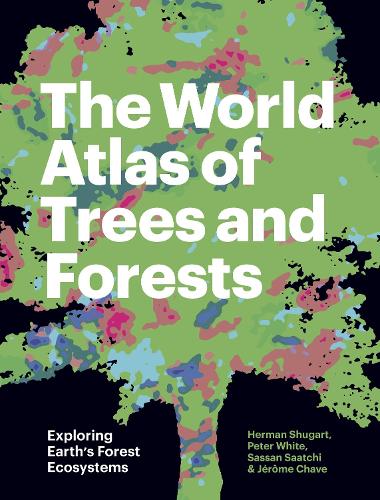
The World Atlas of Trees and Forests: Exploring Earth's Forest Ecosystems
(Hardback)
Publishing Details
The World Atlas of Trees and Forests: Exploring Earth's Forest Ecosystems
By (Author) Herman Shugart
By (author) Peter White
By (author) Sassan Saatchi
By (author) Jrme Chave
Princeton University Press
Princeton University Press
3rd January 2023
United States
Classifications
General
Non Fiction
Forests and woodland
Reference works
634.90223
Physical Properties
Hardback
400
Width 229mm, Height 305mm
Description
The earths forests are havens of nature supporting a diversity of life. Shaped by climate and geography, these vast and dynamic wooded spaces offer unique ecosystems that shelter complex and interdependent webs of flora, fungi, and animals. The World Atlas of Trees and Forests offers a beautiful introduction to what forests are, how they work, how they grow, and how we map, assess, and conserve them.
- Provides the most wide-ranging coverage of the worlds forests available
- Takes readers beneath the breathtaking variety of wooded canopies that span the globe
- Profiles a wealth of tree species, with enlightening and entertaining natural-history highlights along the way
- Features stunning color photos, maps, and graphics
- Draws on the latest cutting-edge research and technology, including satellite imagery
Reviews
"Winner of the Dartmouth Medal for Outstanding Reference Work, American Library Association"
"Winner of the PROSE Award in Environmental Science, Association of American Publishers"
"[A] beautiful introduction to the sister sciences of trees as individual plants and as forest ecosystems. . . . A visually pleasing volume to browse for anyone curious about the hidden forces that determine the location, appearance, and functioning of forests in their backyard or around the globe." * Library Journal *
"Theres so much packed into it, in between gorgeous photography of trees from around the world, that The World Atlas of Trees and Forests should make absorbing reading for anyone looking to understand more about trees from a biological, ecological and geographical perspective."---Penny Sarchet, New Scientist Wild Wild Life
"This is a mammoth tome, ambitious in scope and wonderfully informative in all that it delivers."---David Gascoigne, Travels with Birds
"About 250 beautiful colour photographs, many of which are full pages, impressed me; these alone make the book worth owning. The text is written in a clear, scientific style that also winks at the non-specialist reader."---Gianniantonio Domina, Community Ecology
"[This book] will bolster the existing literature on forests and woodlands and will be of interest to all who open it."---Michael Higgins, British Naturalists Association
Author Bio
Herman Shugart is the W. W. Corcoran Professor of Natural History (Emeritus) at the University of Virginia. His books include How the Earthquake Bird Got Its Name and Other Tales of an Unbalanced Nature. Peter White is Professor of Biology (Emeritus) at the University of North Carolina, Chapel Hill. Sassan Saatchi is senior scientist at the Jet Propulsion Laboratory at the California Institute of Technology and adjunct professor at UCLAs Institute of the Environment and Sustainability. Jrme Chave is director of research at the National Center for Scientific Research (CNRS) in Toulouse, France.
